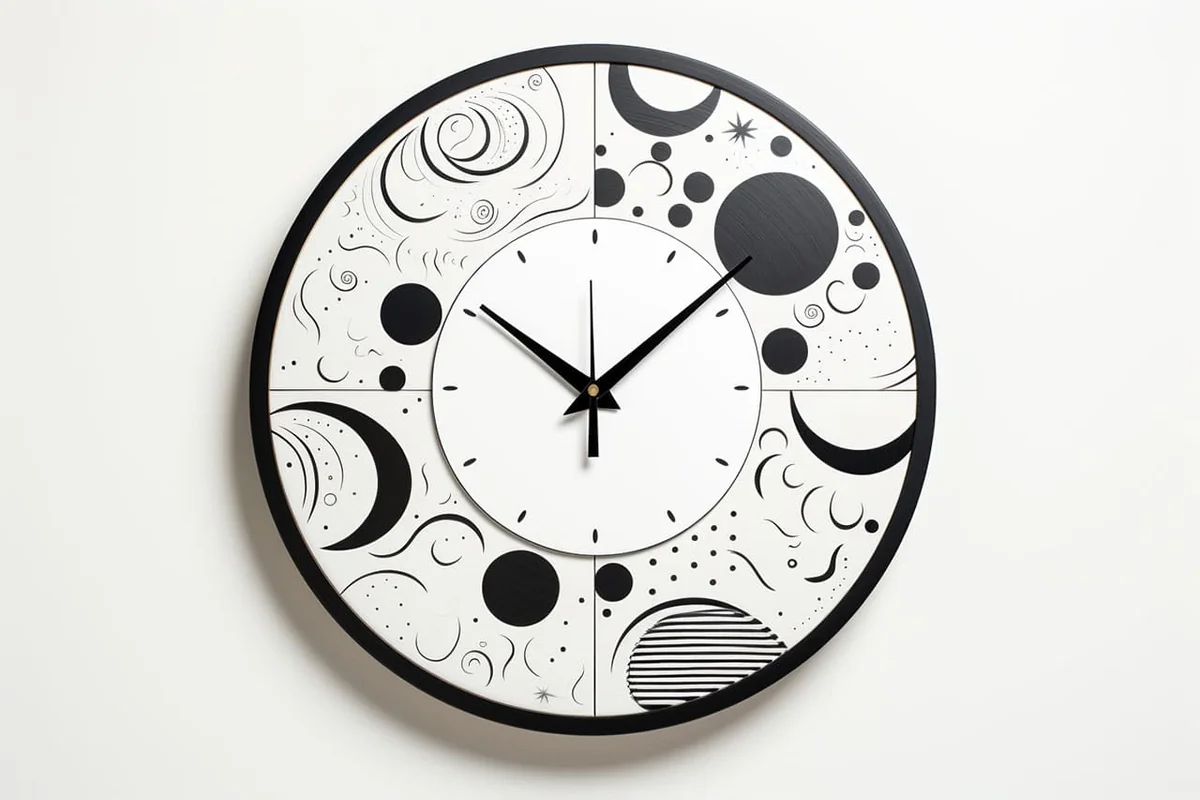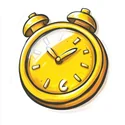How to Draw a Clock in 7 Simple Steps
Learn how to draw with this step-by-step tutorial.

Materials You'll Need
- Drawing paper
- Pencil (HB or 2B)
- Eraser
- Markers
- Ruler
- Compass

Welcome to this engaging step-by-step guide on how to draw a clock! At first glance, creating a detailed drawing of a timepiece might appear challenging, but don't be intimidated. With the right techniques and a bit of practice, you can produce a stunning representation of a clock that not only captures its accurate form but also showcases your artistic skills.
In this article, we'll break down the drawing process into manageable steps, ensuring that you can follow along easily, regardless of your current drawing abilities. Whether you're a beginner eager to learn or an experienced artist looking to refine your skills, this guide is designed to assist you in making your clock drawing come to life. So, gather your materials, find a comfortable spot, and let's embark on this creative journey together!
Materials Required
Before we begin, make sure you have the following materials available:
-
Pencil: A standard graphite pencil will work well for sketching and outlining.
-
Eraser: A good quality eraser will help you make corrections and clean up your drawing.
-
Paper: Choose a smooth drawing paper that can handle shading and detail work.
-
Ruler: A straight ruler will be helpful for creating precise lines and measurements.
-
Compass: A compass will be essential for drawing the circular shape of the clock face.
-
Protractor: You may need a protractor to accurately measure and place the clock numbers.
Now that we have our materials ready, let's dive into the step-by-step process of drawing a clock.
Step 1: Sketch the Clock Face Shape
Start by lightly sketching a circle on your paper using the compass. This circle will serve as the base shape for the clock face. Take your time to ensure the circle is smooth and well-proportioned.
Step 2: Divide the Circle into Hours
Using the protractor, divide the circle into twelve equal sections, like the numbers on a clock. Begin by placing a small dot at the top center of the circle, which will represent the 12 o'clock position. Then, measure and mark the remaining eleven positions, evenly spaced around the circumference of the circle.
Step 3: Outline the Clock Numbers
Using your pencil, lightly draw the clock numbers inside each of the twelve divisions. Start with the 12 at the top, then continue clockwise with the numbers 1 through 11. Take care to ensure that the size and positioning of the numbers are consistent.
Step 4: Add Hour and Minute Hands
Draw a small line extending from the center of the clock face towards the 12 o'clock position. This will be the hour hand. Next, draw a longer line extending from the center towards the current minute position on the clock. This longer line represents the minute hand. Make sure the hands are proportional and aligned correctly.
Step 5: Create Hour Markers
To indicate the hours between the main clock numbers, draw shorter lines or dots along the circumference of the clock face. These markers will help to give a more accurate representation of the time. Space them evenly between the main numbers.
Step 6: Shade the Clock Face
Add shading to your clock face to give it depth and dimension. Use light, gentle strokes to darken the area around the clock numbers and hour markers. Gradually build up the shading, keeping the center of the clock face slightly lighter than the outer edges.
Step 7: Finalize the Hour and Minute Hands
Using your pencil, refine the hour and minute hands of the clock. Make them slightly thicker at the base and gradually taper towards the ends. Add any additional details, such as an arrowhead at the end of the minute hand or a decorative design on the hour hand.
Tip: When drawing a clock, start by sketching a perfect circle as your base using a compass or a round object to ensure symmetry; this will provide the foundation for the clock's face. Next, lightly mark the positions for the hour and minute markers using a protractor or by dividing the circle into sections, ensuring accuracy in your timekeeping design. As you add details like the clock hands and numbers, consider the perspective; using lighter lines for initial sketches allows for adjustments before committing to darker outlines. Lastly, don't forget to include shading or highlights to give your clock dimension—try adding shadows to one side of the clock for a more three-dimensional look. Keep practicing, and remember that each stroke brings you closer to mastering this timeless subject!
Conclusion
Congratulations! You have successfully learned how to draw a clock step by step. Remember, the key to achieving a realistic clock drawing is patience and attention to detail. Take your time with each step and practice regularly to improve your skills. With practice, you will be able to draw clocks with precision and confidence. Happy drawing!
Gallery of Clock Drawings



Fun Facts About Clocks
-
The earliest known clocks were sundials, used by ancient civilizations to track time using the sun's position.
-
The word "clock" comes from the Latin word "clocca," which means bell.
-
Mechanical clocks became widespread in the 14th century, often installed in church towers to strike the hours.
-
The first pendulum clock was invented by Christiaan Huygens in 1656, significantly improving timekeeping accuracy.
-
Quartz clocks, introduced in the 20th century, offer even greater precision by using quartz crystals to regulate the timekeeping process.
-
The largest and most famous clock in the world, Big Ben, is not actually a clock; Big Ben is the name of the bell housed within the Elizabeth Tower.
-
Atomic clocks, which use the vibrations of atoms to measure time, are the most accurate clocks in existence.
-
Due to the Earth's rotation gradually slowing down, leap seconds are occasionally added to atomic time to keep clocks in sync with the Earth's movements.
-
Clocks have been important symbols in art and literature, often representing themes of time, mortality, and fate.
-
In some cultures, giving a clock as a gift is considered bad luck, as it can symbolize time running out.
Suggestions for Scenes and Settings for Clock Drawings
-
Steampunk Clock Workshop: Illustrate a bustling workshop filled with gears, steam, and intricate clocks in various stages of assembly.
-
Grandfather Clock in a Haunted Mansion: Capture a spooky moment with a tall, ornate clock striking midnight in a dimly lit, cobweb-filled room.
-
Sundial in an Ancient Garden: Draw an elegant sundial casting a long shadow across a lush garden surrounded by Roman statues and flowers.
-
Inside a Giant Clock Tower: Showcase the immense interior of a clock tower with its massive pendulum swinging and complex machinery at work.
-
Surreal Melting Clocks in a Dreamscape: Create a Dali-inspired scene with clocks draped over dreamlike landscapes and bizarre shapes.
-
Modern Digital Clock Skyline: Design a futuristic cityscape where skyscrapers have digital clocks integrated into their facades, illuminating the skyline.
-
Clockmaker's Cozy Workshop: Picture a quaint workshop with a clockmaker meticulously working on intricate timepieces by candlelight.
-
Vintage Timepiece Collection: Depict a gallery of antique clocks displayed in glass cases, each with its own unique character and history.
-
Astronomical Clock Marvel: Illustrate a grand astronomical clock in a medieval town square, complete with moving celestial markers and chimes.
-
Whimsical Clock Forest: Conceive a magical forest where trees have clock faces, each telling a different time as woodland creatures go about their day.